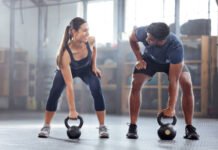If you’re looking for a new way to burn calories and lose weight, rucking may be just the activity you need. Rucking is a form of exercise that involves walking with a weighted backpack or rucksack. Not only does rucking help you burn calories, but it can also help you build muscle, increase cardiovascular endurance, and improve overall fitness. In this post, we’ll explore the benefits of rucking for weight loss and share some tips from West Medical for getting started.
What is Rucking?
Rucking is a form of exercise that involves walking with a weighted backpack or rucksack. The term “ruck” comes from the military, where soldiers use backpacks, or rucksacks, to carry their gear during long marches. Rucking has become popular among civilians as a form of exercise, especially among those who want to improve their fitness or lose weight.
Rucking is a low-impact exercise that can be done by people of all fitness levels. Unlike running or high-impact exercise, rucking puts less stress on your joints, making it a good option for those who are overweight or have joint pain. Rucking can also be done anywhere, whether it’s on the sidewalk, hiking trails, or even on a treadmill.
How Rucking Can Help You Lose Weight
Rucking is an excellent way to burn calories and lose weight. Walking with a weighted backpack or rucksack increases the intensity of the exercise, causing you to burn more calories than you would by simply walking. The amount of calories you burn while rucking depends on several factors, including your weight, the weight of your backpack, and the distance you walk.
According to a study published in the Journal of Strength and Conditioning Research, rucking with a 30-pound backpack burns approximately 300-400 calories per hour for a person who weighs 150 pounds. If you weigh more than 150 pounds, you’ll burn even more calories. The number of calories burned will also increase as you increase the weight of your backpack or the distance you walk.
Rucking can also help you build muscle, which can help you lose weight in the long term. The weight of the backpack provides resistance, which helps build muscle in your legs, back, and core. As you build muscle, your body will burn more calories even when you’re not exercising.
Benefits of Rucking
In addition to helping you lose weight, rucking has several other benefits:
- Increased cardiovascular endurance: Rucking is a cardiovascular exercise that can improve your heart health and endurance.
- Improved posture: Carrying a weighted backpack forces you to engage your core muscles, which can improve your posture over time.
- Better balance: The added weight of the backpack can help improve your balance and stability.
- Mental health benefits: Rucking can be a stress-relieving activity that can improve your mood and mental health.
- Improved bone density: Rucking is a weight-bearing exercise, which can help improve bone density and reduce the risk of osteoporosis.
How to Get Started with Rucking
If you’re interested in trying rucking, here are some tips to help you get started:
- Start with a lightweight backpack: If you’re new to rucking, start with a lightweight backpack and gradually increase the weight as you become more comfortable.
- Wear good shoes: Invest in a good pair of shoes that provide support and cushioning for your feet. Rucking can be hard on your feet, so it’s important to wear shoes that will protect them.
- Choose a comfortable backpack: Make sure your backpack fits well and is comfortable to wear. Look for a backpack with padded straps and a waist belt to help distribute the weight evenly.
- Start with short distances: Start with short distances, such as one or two miles, and gradually increase the distance as you become more comfortable.
- Increase the weight slowly: Once you’re comfortable with the weight of your backpack, gradually increase the weight by adding a few pounds at a time.
- Use proper form: When rucking, keep your back straight and engage your core muscles to help distribute the weight evenly. Take short, quick steps and keep your feet close to the ground to reduce the impact on your joints.
- Stay hydrated: Make sure to drink plenty of water before and during your ruck. Carrying a water bottle or hydration pack in your backpack can help you stay hydrated while rucking.
- Listen to your body: If you experience pain or discomfort while rucking, slow down or take a break. Don’t push yourself too hard, especially if you’re new to rucking or have any underlying health conditions.
Rucking Workouts for Weight Loss
Here are some rucking workouts you can try to help you lose weight:
- Beginner Ruck Workout: Start with a 20-pound backpack and walk for 30 minutes at a moderate pace. Gradually increase the weight and distance over time.
- Interval Ruck Workout: Alternate between walking at a moderate pace for five minutes and then walking at a faster pace for one minute. Repeat for 30-45 minutes.
- Hill Ruck Workout: Find a hill or incline and walk up and down it with a weighted backpack. Start with a 10-15% grade and gradually increase the grade over time.
- Long Distance Ruck: Set a distance goal, such as five or ten miles, and walk with a weighted backpack at a moderate pace.
- Ruck and Strength Circuit: Combine rucking with strength exercises, such as lunges, squats, and push-ups, to build muscle and burn calories.
Conclusion
Rucking is a simple, low-impact exercise that can help you lose weight, build muscle, and improve overall fitness. Whether you’re a beginner or an experienced athlete, rucking can be a fun and challenging activity that can help you reach your fitness goals. Just remember to start slowly, use proper form, and listen to your body to avoid injury or discomfort. With time and dedication, rucking can help you achieve the healthy, active lifestyle you’ve always wanted.



